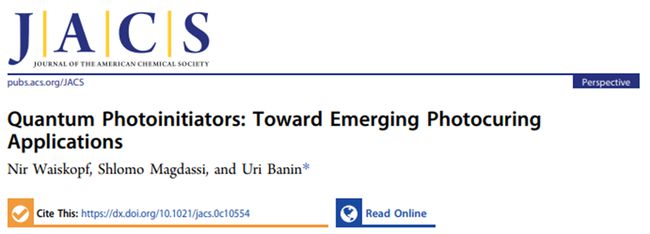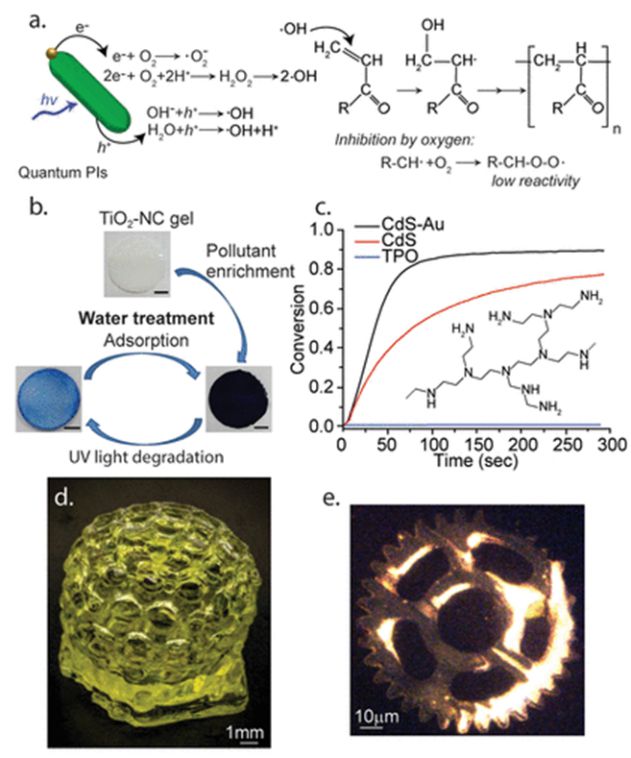Semiconductor nanocrystals are a kind of promising photocatalysts with wide applications in renewable energy, biomedicine and environmental sustainable development. They have flexible spectral tunability, chemical stability and considerable photocatalytic efficiency. Its functional characteristics depend on the complex influence of multiple parameters, including composition, size, structure, surface coating and environmental conditions. It has been proved that quantum constrained semiconductor nanocrystals can be used as photoinitiator (PI) for free radical polymerization, and the photocatalytic mechanism has been provided. In recent years, the development of nanocrystal synthesis and surface engineering techniques has opened the way for the next generation of quantum PI.

Uri Banin et al. from Hebrew University of Israel reviewed the research progress of nanocrystals photocatalysts, summarized the research status of semiconductor nanocrystals as photoinitiators and reversible deactivation free radical polymerization (RDRP) photocatalysts, and pointed out the prospects and challenges in this field. The study, titled “Quantum Photoinitiators: Toward Emerging Photocuring Applications” was published in Journal of the American Chemical Society.

"Quantum materials" was used as a photoinitiator by Hoffman and others back in 1992. The authors speculate that nanostructures would be better initiators due to reduced light scattering and higher surface area. Polymerization may be carried out by direct reduction of free radical anions or monomers, mainly depending on the photoinitiation activity of nanocrystals. Compared with traditional organic photoinitiators, nanocrystals have the advantage of both photoinitiation and filler versatility, such as mechanical properties. These early studies paved the way for the development of quantum photoinitiators, and current research on photoinitiators is aimed at improving the synthesis of nanocrystals to meet the needs of photocatalytic applications. Pawar et al. developed a highly efficient quantum PI that can be excited in the near ultraviolet range, which can be used as a photoinitiator in commercial 3D printers to achieve industrial photocuring technology. Such 3D lithography printers can easily produce complex structures that are often impossible with conventional manufacturing techniques. One of these technologies, 3D printing, is based on a local polymerization process that is triggered by light irradiation of a photoinitiator to form a reactive product. This additive manufacturing technology, which aggregates efficiently in water, opens up new avenues for emerging biomedical applications, such as constructing scaffolds for tissue engineering, smart capsules for drug delivery, memory polymers for creating smart shapes, and more.
Reg Office: Room 435, Building 9, No.2568 Gudai Road, Minhang District, Shanghai, China.
Pilot Lab: Building 1, No. 589 Qinling Street, Shijiazhuang High-tech Zone,Hebei, China.
Plant Unit 1: Xincheng town clean chemical park, Xinji, Hebei, China.
Plant Unit 2: Dongming County South Chemical Park, Heze City, China.
Tel: +86-21-34943721
Email:Massive@massivechem.com
Info@massivechem.com
Shanghai Massive Chemical Technology Co., Ltd. All Rights Reserved(C)2023 Supported by Record number:沪ICP备18008139号